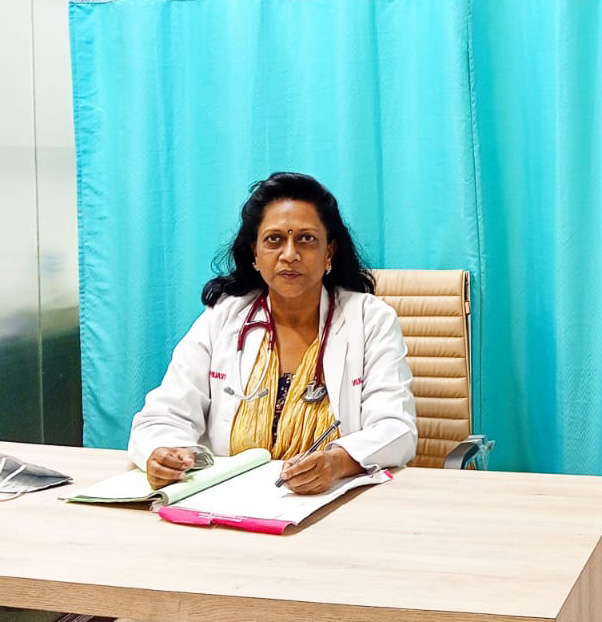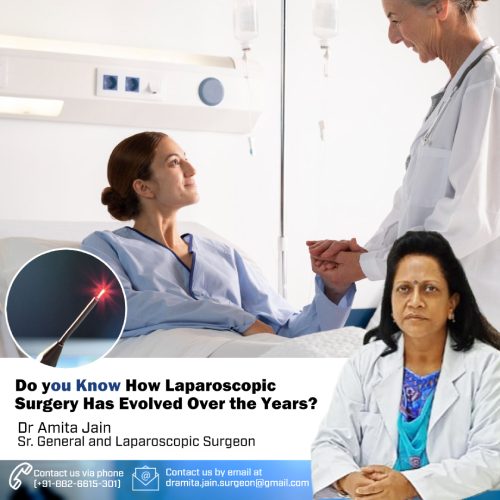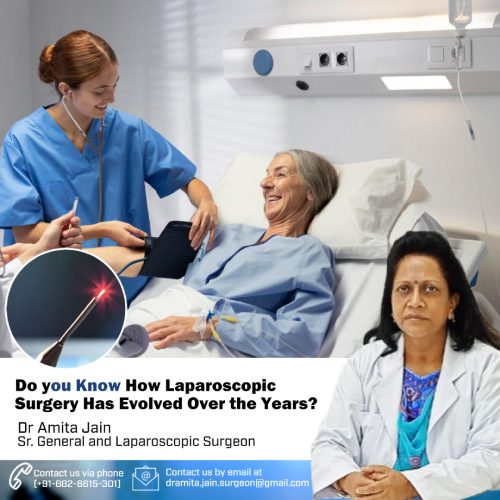Shares India’s Leading Laparoscopic Surgeon Dr Amita Jain
Over the past few decades, laparoscopic surgery has emerged as a groundbreaking technique in the field of medicine. Commonly known as minimally invasive surgery, this method has transformed the way many surgical procedures are performed, leading to improved patient outcomes, reduced recovery times, and minimized postoperative complications.
The evolution of laparoscopic surgery has been driven by advances in technology, techniques, and surgeon training. In this article, India’s top laparoscopy surgeon Dr Amita Jain shares the key aspects of this revolutionary development and its impact on modern medicine.
How did Laparoscopic Surgery emerge?
Laparoscopic surgery was first introduced in the early 1980s, marking a significant shift from traditional open surgery. The technique involves making small incisions, usually less than half an inch, through which a specialized surgical camera (laparoscope) and other miniature instruments are inserted into the body. The laparoscope provides a high-definition, real-time view of the internal organs, allowing surgeons to perform intricate procedures with precision.
What are the Advantages of Laparoscopic Surgery?
Minimal Scarring:
One of the primary benefits of laparoscopic surgery is reduced scarring. Compared to traditional open surgery, which requires large incisions, laparoscopic procedures leave minimal scars, resulting in better cosmetic outcomes and reduced risk of postoperative wound infections.
Faster Recovery:
Due to the smaller incisions and reduced tissue trauma, patients undergoing laparoscopic surgery experience quicker recovery times. Hospital stays are generally shorter, and patients can resume their normal activities sooner than with traditional surgery.
Reduced Pain:
Laparoscopic surgery is associated with less postoperative pain compared to open surgery. This is mainly because smaller incisions result in fewer nerve endings being disrupted during the procedure.
Lower Risk of Complications:
With smaller incisions and reduced tissue trauma, the risk of complications such as bleeding and infection is significantly lower in laparoscopic surgery.
Enhanced Visualization:
The laparoscope provides surgeons with a magnified and high-definition view of the surgical site, enabling them to identify and address issues more accurately.
What are the Technological Advancements?
The success and widespread adoption of laparoscopic surgery can be largely attributed to significant technological advancements in recent years.
High-Definition Imaging:
Improved camera technology has resulted in better visualization during laparoscopic procedures. Surgeons can now see intricate details with remarkable clarity, enhancing their ability to perform complex surgeries.
Robotic-assisted Laparoscopy:
Robotic systems have been integrated into laparoscopic surgery, allowing surgeons to perform procedures with even greater precision and dexterity. The robotic arms can mimic the movements of the surgeon’s hands and wrists, making delicate procedures more manageable.
Energy-based Instruments:
Modern laparoscopic instruments use various forms of energy, such as electrosurgery and ultrasonic energy, to cut and seal tissues simultaneously. These energy-based instruments enhance efficiency and reduce bleeding during surgeries.
3D Visualization:
Three-dimensional visualization systems offer surgeons a more immersive view of the surgical site, providing depth perception and improved spatial orientation, leading to better outcomes.
Training and Skill Development
The evolution of laparoscopic surgery also involves extensive training for surgeons to master these advanced techniques. Laparoscopic procedures demand a higher level of hand-eye coordination and spatial awareness than open surgeries. As a result, surgical training programs have been developed to ensure that surgeons gain the necessary skills before performing laparoscopic procedures on patients.
Laparoscopic surgery has revolutionized the field of medicine by offering numerous advantages over traditional open surgery. With its minimal scarring, faster recovery times, and reduced risk of complications, laparoscopic surgery has become the preferred choice for many surgical procedures.
Technological advancements and surgeon training continue to push the boundaries of what can be achieved through minimally invasive techniques. As the field continues to evolve, we can expect laparoscopic surgery to play an increasingly vital role in improving patient care and outcomes worldwide.

Dr Amita Jain is a surgeon with the highest degree of professional competence, precision and surgical craftsmanship. Performed all complicated general surgery procedures with in depth knowledge of invasive and few minimal invasive and onco surgical techniques. Underwent special training in trauma, executed various trauma-related complex life-saving neurosurgical procedures, reconstructed injured mangled limbs and performed vascular and reconstructive procedures with critical care.
Dr Amita Jain holds 28 plus years of rich experience in Trauma and General Laparoscopic Surgeries (including Gallbladder stone removal, appendix removal, hernia repair surgery, piles and fissure surgeries). She was the Professor Surgery of at the Army College of Medical Sciences and Base Hospital Delhi Cantt. In 1994 she was commissioned as Surgeon under the United Nations Mission in Congo. From 2020 to 2022, she worked with Bansals Hospital. Currently, Dr Amita Jain is the Senior Consultant, (Speciality: General and Laparoscopic Surgeon) at Artemis Lite Hospital, New Delhi and Sr. General and Laparoscopic Surgeon at Rainbow Children Hospitals, Malviya Nagar, Delhi.

